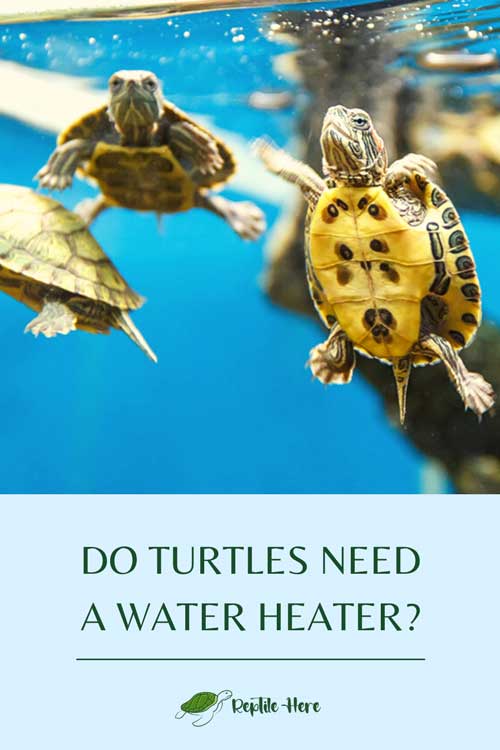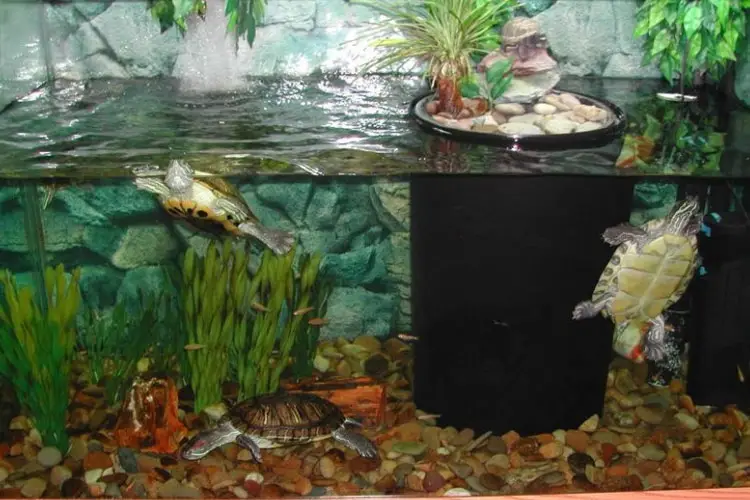Do Turtles Need a Water Heater? What Is the Purpose of Temperature to Turtles?
Like other reptiles, turtles are ectothermic and depend on external sources to manage their body temperatures. In the wild, these sources include sunlight and heated surfaces like rocks. However, with the controlled temperatures in homes, you might wonder if heating is necessary for captive turtles.
So, do turtles need a water heater? Yes, most turtle species in captivity require regulated water temperatures. Heating is crucial to keep the turtle warm, especially in winter. Temperature is vital for normal metabolism, and low temperatures can cause fatal illnesses in turtles.
Temperature varies between turtle species and age. Keep reading to learn more, including the importance of temperature regulation to turtles.
Do Turtle Pets Need a Water Heater?
Contents
Temperature is a crucial factor in a turtle’s survival and growth. Not just for the water in the aquarium but also around the basking area. According to an article on marine turtles, six of the seven turtle species are considered endangered due to temperature changes. In the wild, humans are responsible for these changes.
Wild turtles spend most of their day basking under the sun warming themselves. Their bodies then store this heat to keep them warm during the night when it is colder. During winter, wild turtles adapt by hibernating to preserve their body temperatures. They usually survive, although a lot of their body activities slow down during this time.
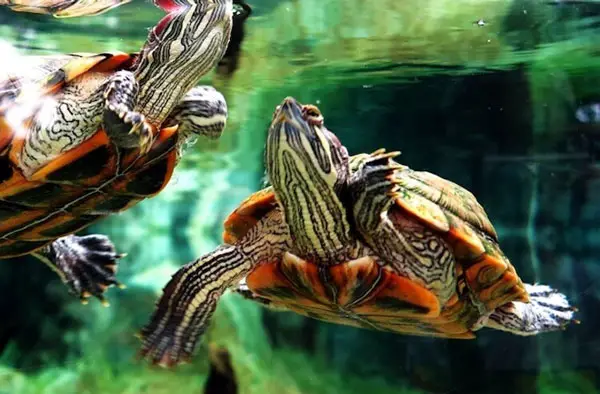
For captive turtles, their survival and living conditions are different. They depend on the owners to provide heat to warm their bodies during the colder days. Water temperatures can be regulated using water heaters installed in their aquariums. An ideal heater should have settings to adjust temperatures.
A wide variety of submersible water heaters you can install in your aquarium are readily available in pet stores. Make sure you buy a reliable heater with the correct wattage that fits your turtle’s aquarium. An aquarium floating thermometer is also required to read and determine the correct temperatures in the tank and basking area.
What Is the Purpose of Temperature to Turtles?
Temperature is essential to aquatic turtles, particularly during their development stages. A turtle in a warm area will likely be more active, and its metabolism will also be fast. This means their digestion will be swift, and their body will receive the much-required nutrients on time. As a turtle owner who wants these reptile pets to be active most of the time, regulating the temperatures is just the trick.
Since they are cold-blooded, turtles have a slow metabolism which means food digestion is slower. In an analysis of why turtles swim slowly, it’s argued their metabolism determines their slow cruising speed. This fact also explains why turtles are less active in the wild and often hibernate.
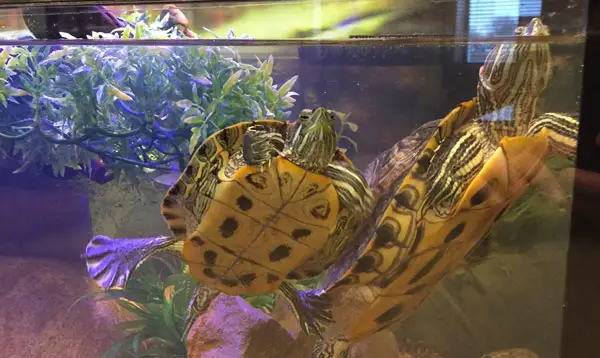
Temperature also determines the gender of the turtle that eggs will hatch. Eggs exposed to high temperatures are more likely to hatch to females and vice versa. In an article on how hot is too hot for marine turtles, it’s said since 2007, 90 percent of Loggerhead hatchlings are female. The lack of male turtles to fertilize eggs can result in the species becoming extinct.
Baby turtles need more heat to process proteins essential for healthy growth. This means that if your turtle is of age below five years, you will need to keep the temperatures warmer. High temperatures will keep their digestions active and faster for healthier growth. However, adult turtles are much more resilient and can withstand a wide range of temperatures.
Also read: Do Turtles Make Sounds?
Which Temperatures Are Best for My Pet Turtle?
Temperature ranges vary across turtle species, where some types of turtles prefer their water warmer than others. Also, you are supposed to adjust the temperatures based on your turtles’ age, with younger ones requiring higher temperatures than adults. Below are ideal water temperatures for turtles of different ages, followed by various turtle species.
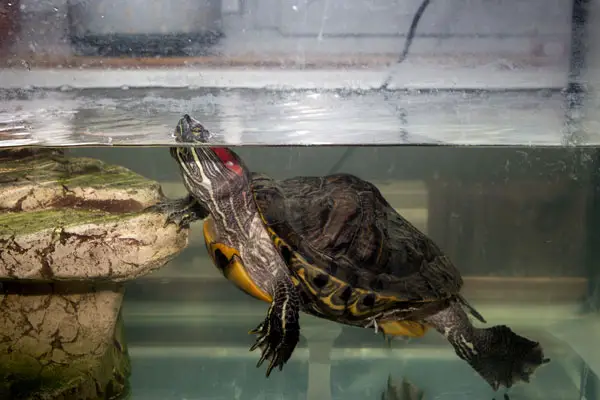
1. The ideal temperatures for hatchlings
Hatchlings can do well in temperatures ranging from 75 – 80°F/23 – 27°C. In these temperatures, baby turtles are warm and more active in the water.
2. The ideal temperatures for juveniles
Juveniles require warmer temperatures enough for normal metabolism. The ideal temperatures for juvenile turtles range between 72 – 80°F/ 22 – 27°C.
3. The ideal temperatures for adult turtles
Adult turtles don’t require regular temperature regulation, and they can survive if the surrounding air temperature is warm enough. Their ideal temperatures range between 68 – 75°F/ 20 – 27°C.
| Turtle | Ideal Temperatures in °F | Ideal Temperatures in °C |
| Red-eared slider turtle | 75 – 85°F | 24 – 29°C |
| African side neck turtle | 70 – 75°F | 20 – 24°C |
| Eastern box turtle | 70 – 80°F | 20 – 26°C |
| Western painted turtle | 75 – 80°F | 24 – 26°C |
| Mississippi map turtle | 70 – 75°F | 20 – 24°C |
| Common musk turtles | 70 – 80°F | 20 – 26°C |
| Spotted turtle | 75 – 80°F | 24 – 26°C |
Sometimes you will need to increase or lower the temperatures if a veterinarian suggests so. It is common when the pet is ill that the water temperatures are regulated to better its health. An electronic temperature control system is essential to correct water temperatures and maintain the required warmth.
But, unless under a vet’s instruction, the temperatures should never exceed 78 degrees Fahrenheit for adult turtles. Overheating the aquarium only exposes your turtle to unnecessary risks. We will talk about the effect of excessively warm or cold aquarium water.
How Do I Determine The Right Heater Wattage for My Aquarium?
When choosing a heater for your aquarium, ensure you buy a modern one with the best features. Apart from having a highly adjustable and submersible heater, also consider the wattage. Below is an estimate of the wattage based on aquarium size.
| Aquarium Size | Corresponding Wattage |
| Up to 15 gallons | 50 Watts |
| Above 15 but below 30 gallons | 100 Watts |
| Above 30 but below 45 gallons | 150 Watts |
| Above 45 but below 65 gallons | 200 Watts |
| Above 65 but below 80 gallons | 300 Watts |
The above dimensions are not a one-size-fits-all package. You’ll need to check with your heater supplier for specific details. However, it should not be far from what we have above. If you have juvenile turtles, it means their needs will change as they grow.
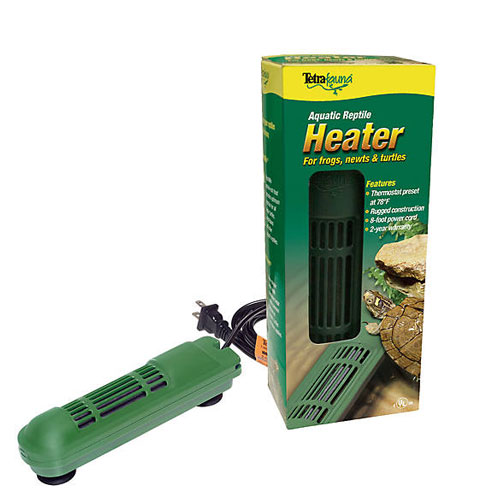
They will increase in size, requiring a bigger aquarium. When you purchase one, remember to also get a heater that corresponds to the tank size. It’s the only way you will cater to all your growing turtle’s needs.
What Happens If the Water Is Too Warm or Cold?
Since water temperature dictates most aquatic turtles’ activities, if not moderated, the pet is at risk. The following are possible scenarios if you do not regulate the water temperatures.
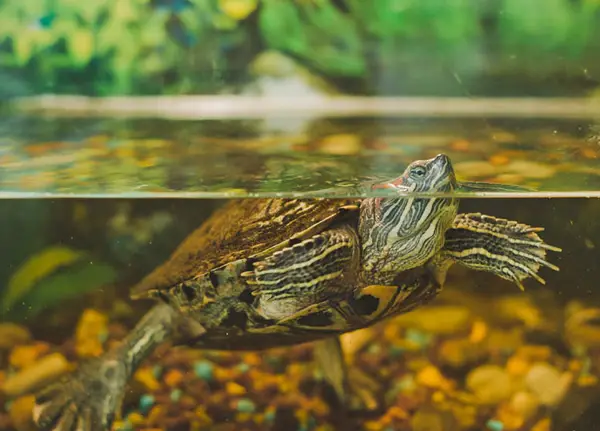
- Your pet turtle can get a respiratory infection like pneumonia if the water is too cold.
- Turtles in cold temperatures will probably adapt by hibernating.
- Turtles exposed to cold temperatures will stop feeding due to slowed metabolism.
- Too warm water can encourage bacterial growth in the tank which will make your pet ill.
- The high temperature will also discourage the pet from basking, which can make it sick.
While in the matter of safety, when choosing a heater, avoid using a glass one. Since turtles are hard-shelled pets, they can break the grass heater and get electrocuted. If you must use the glass heater, use shatterproof materials as a casing to protect it from breakage.
FAQ
Pet owners raise numerous questions on the matter of heating. The questions range from water temperatures to the importance of heating the water tank. Below are the most frequently asked questions and their answers.
Since they are cold-blooded animals, turtles prefer warm water temperatures. Cold waters can slow their metabolism and sometimes force them to hibernate to preserve heat. However, water temperatures should not be too high either, as it can discourage them from basking.
The tank size should determine the type of heater you install in your aquarium. For a small turtle tank with lower water levels, a 50-watt heater is suitable to warm the aquarium. For larger tanks, you can use more powerful heaters or use two of the smaller heaters for even heat dispensation.
You do not necessarily need a water heater at night if your turtle has alternative ways of keeping warm. But, if it doesn’t have any, and the temperatures are 50 degrees Fahrenheit and below, you’ll need to heat its water. We advise getting a ceramic plate or any other heater type that won’t light up the space.
Related: Can Turtles See in The Dark?
Outro
Unlike humans, whose bodies can regulate temperatures, reptiles like turtles cannot. This makes the turtles dependent on external sources like UV light to warm their bodies. In captivity, turtles require heating from sources, including incandescent light bulbs, heating pads, and submersible water heaters.
Temperature plays a crucial role in turtles, from determining their gender at birth to controlling metabolism. Younger turtles require higher temperatures to keep them active and hasten their digestion since they are still developing. There are many dangers if the water is too hot or cold, and regulations should be ideal for specific turtle species.
